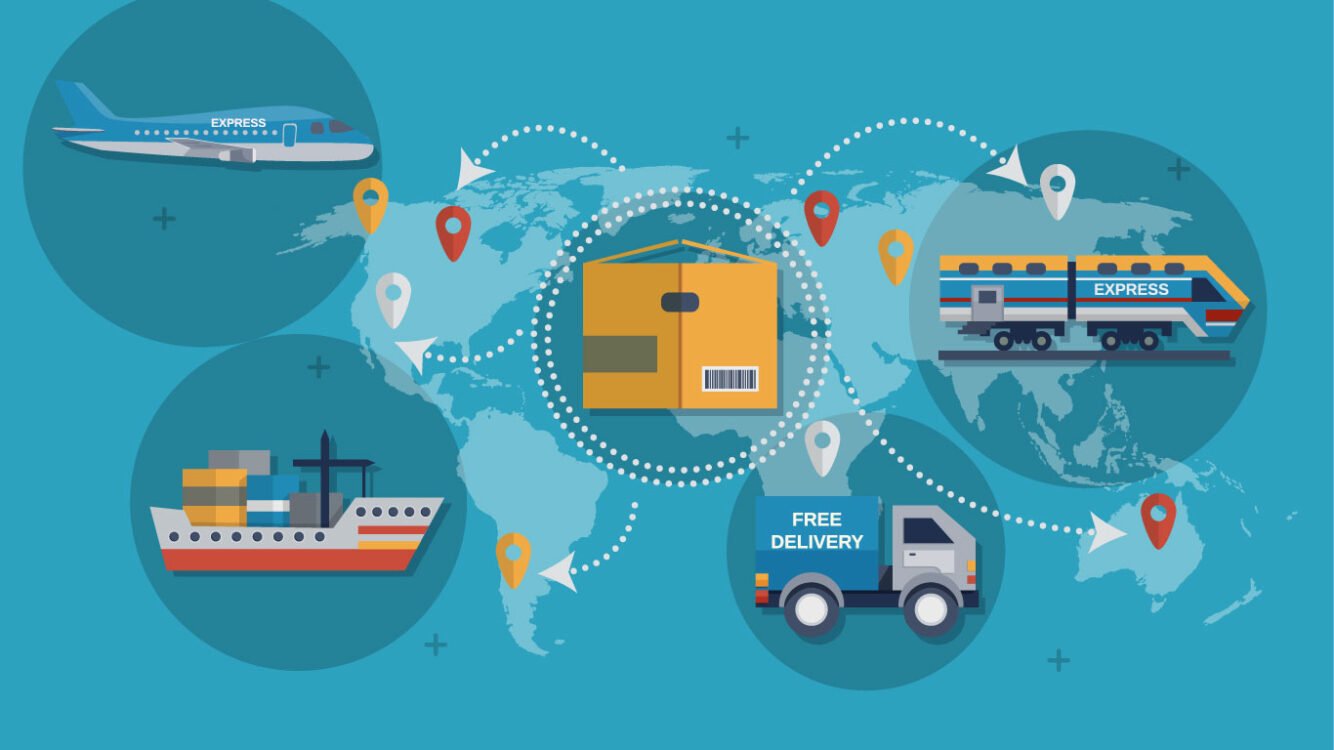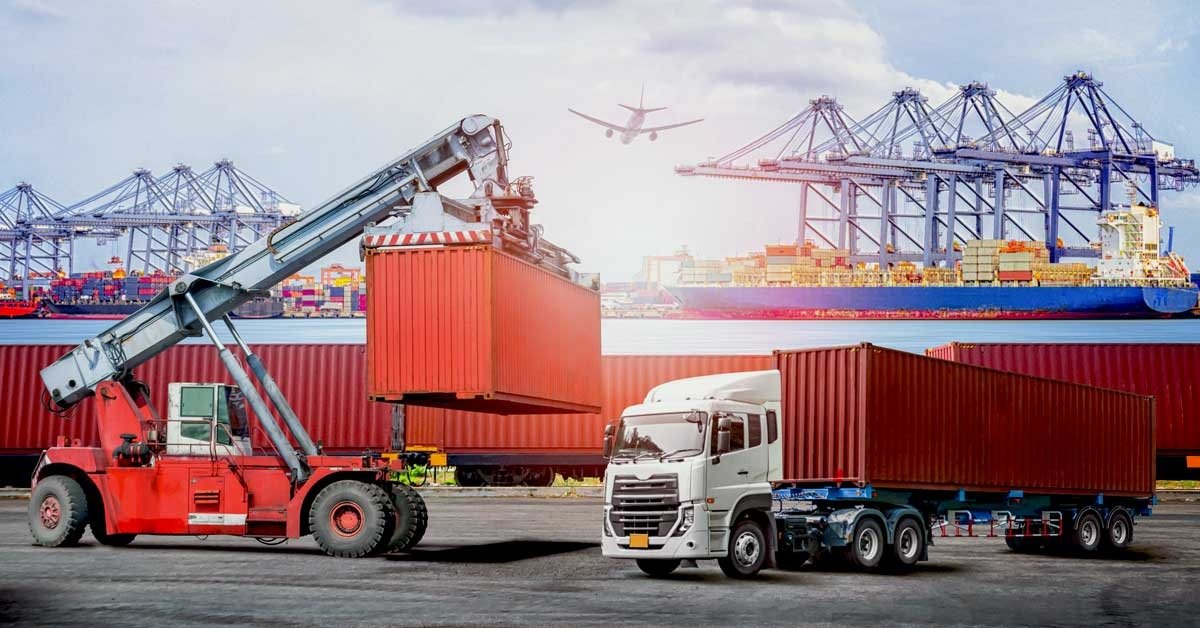Logistics Solutions in the USA: Ultimate Guide to Beating Supply Chain Disruptions in 2025
Introduction Logistics solutions in the USA are becoming the backbone of business survival in 2025. With frequent supply chain disruptions—ranging from labor shortages and fuel price hikes to port congestion and extreme weather—American companies need smarter ways to keep operations running smoothly. Instead of reacting to crises, businesses are now adopting proactive logistics strategies powered by technology, automation, and third-party expertise. These solutions are helping wholesalers, distributors, retailers, and manufacturers not only overcome disruptions but also build stronger, more resilient supply chains. “According to the U.S. Department of Transportation, logistics plays a vital role in ensuring economic stability across the U.S.” The State of Supply Chain Disruptions in the USA Disruptions have become the “new normal” for U.S. businesses. Some common issues include: Labor shortages in trucking, warehousing, and ports Fuel price volatility increasing transportation costs Port congestion at major U.S. entry points Natural disasters such as hurricanes, floods, and wildfires Global political instability affecting imports and exports Without strong logistics solutions, these disruptions can lead to stockouts, revenue losses, and damaged customer relationships. “The Federal Motor Carrier Safety Administration reports that driver shortages remain a critical challenge for freight and logistics providers.” Why Businesses Need Smarter Logistics in 2025 In today’s competitive market, companies cannot afford inefficiencies. Logistics solutions help businesses: Gain real-time visibility across the supply chain Respond faster to sudden disruptions Lower costs through optimization and automation Meet increasing customer expectations for speed and reliability A resilient logistics system is now as important as product quality or pricing. Key Logistics Solutions to Overcome Supply Chain Disruptions 1. Digital Supply Chain Platforms Cloud-based systems integrate procurement, transportation, and inventory into one dashboard, enabling businesses to monitor and respond instantly to issues. 2. Artificial Intelligence and Predictive Analytics AI can forecast demand, identify potential disruptions, and recommend proactive solutions—such as rerouting shipments before delays occur. 3. IoT and Real-Time Tracking GPS-enabled tracking ensures businesses know the exact location and condition of goods, reducing theft, spoilage, and uncertainty. 4. Warehouse Automation Robotics, automated picking systems, and smart storage reduce human error, speed up order fulfillment, and lower labor dependency. 5. Third-Party Logistics (3PL) Partnerships Working with experienced 3PL providers gives companies access to wider networks, technology, and flexibility during demand fluctuations. 6. Sustainable Logistics Electric vehicles, alternative fuels, and green warehousing not only reduce emissions but also lower long-term costs, helping businesses future-proof operations. Last-Mile Delivery Innovations The last mile remains one of the most expensive and disruption-prone parts of logistics. In 2025, companies are overcoming challenges by: Using AI-powered route optimization to cut delivery times Setting up micro-fulfillment centers in urban areas Leveraging crowdsourced delivery platforms for flexibility Building Resilient Supply Chains To prepare for future disruptions, U.S. companies are adopting: Supplier diversification – Reducing dependency on one region or vendor Nearshoring and reshoring – Moving manufacturing closer to U.S. markets Inventory buffers – Keeping critical stock in regional warehouses Disaster recovery planning – Establishing backup routes and contingency partners Case Studies: U.S. Companies Overcoming Disruptions Retail Giant – Adopted predictive analytics to anticipate port delays, reducing delivery disruptions by 30%. Pharmaceutical Distributor – Leveraged cold chain IoT monitoring to maintain compliance during heatwaves. Food Supplier – Partnered with a 3PL provider to scale operations during labor strikes, ensuring uninterrupted deliveries. The Future of Logistics Solutions in the USA Looking ahead, businesses can expect to see: Drones and autonomous trucks reducing delivery times Blockchain for supply chain transparency Logistics-as-a-Service (LaaS) models making advanced tools accessible to smaller businesses Conclusion Logistics solutions in the USA are no longer just about moving goods from one point to another—they are about building resilient, intelligent, and future-ready supply chains that can withstand constant disruptions. The challenges of 2025, from unpredictable global events to local labor shortages and rising transportation costs, have made it clear that traditional approaches are no longer enough. Businesses that continue to rely on outdated logistics practices will struggle with delays, inefficiencies, and dissatisfied customers. On the other hand, companies that embrace digital platforms, AI-driven predictive analytics, IoT tracking, automation, and third-party logistics partnerships are turning disruptions into opportunities for growth. Wholesalers and distributors can streamline operations by integrating smart warehouse systems, while retailers and manufacturers can secure customer loyalty through faster and more reliable deliveries. Sustainable logistics—powered by electric vehicles, green warehousing, and eco-friendly packaging—is also becoming a competitive advantage in today’s market where both consumers and regulators demand accountability. Perhaps the most important lesson is that logistics is no longer a back-office function; it is a strategic business driver. By adopting the right logistics solutions, U.S. companies can: Reduce operational costs and waste Improve supply chain visibility and transparency Strengthen customer relationships with reliability Build flexibility to withstand any future disruptions As we move further into 2025, the companies that view logistics as an investment—rather than an expense—will be the ones leading their industries. Whether it’s through advanced technology, strategic partnerships, or sustainable practices, the time to act is now. In short, logistics solutions in the USA are the key to overcoming supply chain disruptions, staying competitive, and securing long-term growth. Businesses that prioritize innovation today will be tomorrow’s market leaders.
Read MoreB2B Logistics Solutions in the USA: Streamlining Operations for Wholesalers and Distributors
Introduction In today’s fast-moving U.S. market, wholesalers and distributors play a critical role in connecting manufacturers with retailers and other businesses. However, with rising transportation costs, global supply chain disruptions, and increasing customer expectations, managing logistics has become more complex than ever. This is where B2B logistics solutions come in. By leveraging technology, third-party providers, and data-driven strategies, wholesalers and distributors can streamline operations, cut costs, and stay competitive. In this article, we’ll explore how modern logistics solutions in the USA are transforming wholesale and distribution, the challenges businesses face, and practical ways to build a more efficient supply chain. The State of B2B Logistics in the USA The U.S. logistics industry is one of the largest in the world, valued at over $2 trillion annually. Wholesale trade accounts for a huge portion of this, covering everything from food distribution to technology components. But wholesalers and distributors are facing new realities: Post-pandemic supply chain disruptions Labor shortages in trucking and warehousing Fuel price volatility High demand for faster deliveries Without modern logistics solutions, these challenges can quickly lead to lost revenue and dissatisfied customers. Why Logistics Solutions Are Essential for Wholesalers and Distributors Efficient logistics is no longer optional—it’s a competitive necessity. Here’s why: Inventory complexity – Managing thousands of SKUs across multiple warehouses requires precision. Customer expectations – Retailers and businesses expect shipments faster than ever. Rising costs – Fuel, labor, and real estate costs continue to climb. Regulations – Compliance with U.S. transport, safety, and environmental laws adds layers of complexity. A robust logistics strategy can address these issues while creating long-term value. Benefits of B2B Logistics Solutions in the USA Improved Efficiency – Automated systems reduce manual errors and streamline processes. Cost Savings – Optimized routes, warehouse automation, and bulk shipping lower expenses. Real-Time Visibility – IoT and GPS tracking ensure transparency at every step. Customer Satisfaction – Reliable, on-time deliveries strengthen business relationships. Risk Management – Data analytics helps predict delays and disruptions. Technology-Driven Logistics Solutions Modern B2B logistics in the USA heavily relies on technology. Some key innovations include: Artificial Intelligence (AI) – Predicts demand, manages inventory, and improves routing. Cloud-based logistics platforms – Provide centralized management for shipments, invoices, and customer communication. Internet of Things (IoT) – Enables real-time monitoring of fleet, warehouse, and even product conditions (ideal for perishable goods). Robotics and automation – Speed up picking, packing, and loading processes in warehouses. Last-Mile Delivery Solutions for Wholesalers Although last-mile delivery is often discussed in e-commerce, it is equally vital for wholesalers. Retailers expect frequent and timely shipments to avoid stockouts. Solutions include: Partnering with 3PL providers that specialize in last-mile efficiency. Route optimization software to minimize fuel costs. Micro-warehousing closer to urban centers for faster delivery. Warehouse and Inventory Management For wholesalers, warehouses are the backbone of logistics. Effective solutions include: Automated Storage and Retrieval Systems (ASRS) – Improve storage efficiency. RFID and Barcode Tracking – Increase accuracy in inventory counts. AI-powered Demand Forecasting – Prevent overstocking and stockouts. Efficient warehouse operations directly translate into lower costs and better customer satisfaction. Sustainable Logistics Solutions in the USA Sustainability is no longer just a buzzword; it’s a business requirement. Customers, investors, and regulators expect eco-friendly practices. Electric trucks and alternative fuels are reducing carbon footprints. Eco-friendly packaging minimizes waste. Energy-efficient warehouses cut long-term operating costs. Adopting green logistics not only helps the planet but also attracts environmentally conscious clients. Role of Third-Party Logistics (3PL) Outsourcing logistics is becoming increasingly popular among U.S. wholesalers and distributors. Advantages of 3PL: Access to advanced technology without heavy investment Scalability during seasonal demand peaks Expertise in compliance, customs, and cross-border trade By partnering with 3PL providers, businesses can focus more on core operations while leaving logistics management to specialists. Cross-Border Logistics Solutions Many U.S. distributors deal with suppliers and buyers in Canada and Mexico, making cross-border logistics critical. Customs compliance – Avoiding delays at borders USMCA trade benefits – Lower tariffs and easier trade flows Bilingual customer service – Facilitating smoother operations Proper cross-border planning ensures efficiency and avoids costly delays. Overcoming Supply Chain Disruptions Unexpected events like hurricanes, port strikes, or global crises can disrupt supply chains. U.S. wholesalers are adopting: Disaster recovery plans Diversified supplier networks Predictive analytics tools to anticipate risks Cost Optimization Strategies Keeping logistics affordable is key for wholesalers and distributors. Some strategies include: Route planning & fuel efficiency Consolidated shipping to reduce costs per unit Carrier contract negotiation for better rates Case Studies: U.S. Wholesalers Using Modern Logistics Food Distributor – Leveraged cold chain logistics to maintain freshness across states. Technology Wholesaler – Used AI-powered demand forecasting to reduce inventory costs by 20%. Choosing the Right Logistics Partner in the USA Key factors to consider: Technological capabilities Experience with wholesale/distribution Scalability and flexibility Strong customer support The Future of B2B Logistics Solutions in the USA Drones & autonomous trucks will speed up deliveries. Data-driven decision-making will become the norm. Logistics-as-a-Service (LaaS) will give businesses flexibility without heavy investments. Conclusion For wholesalers and distributors in the USA, logistics is no longer just about moving goods—it’s about building smarter, faster, and more resilient supply chains. By adopting B2B logistics solutions—from advanced technologies to 3PL partnerships—businesses can cut costs, improve efficiency, and deliver the reliability their partners expect.
Read More

